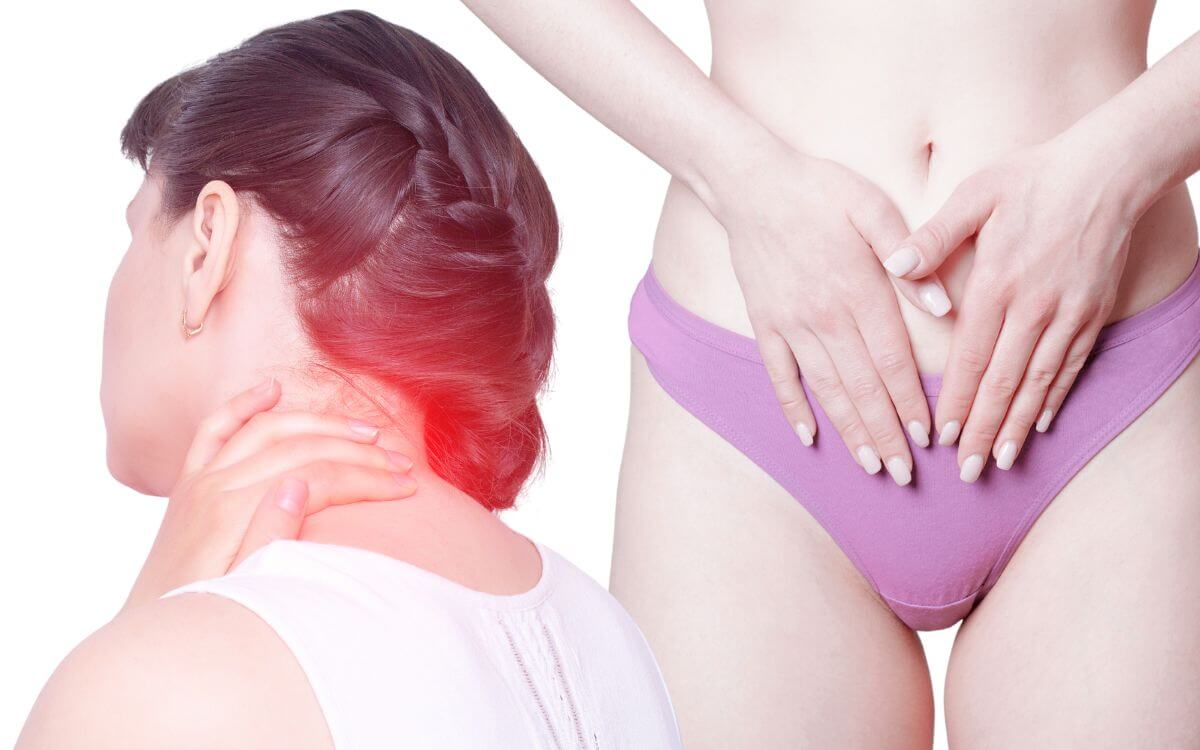Endometriosis and fibromyalgia for caregivers.
Caregiving men aren’t widely recognized, furthermore, they feel marginalized and unsupported. There is not enough information about endometriosis and fibromyalgia for caregivers, and this leaves them feeling lost and confused.
Endometriosis and fibromyalgia are two conditions that disproportionately affect women, but men can be affected by their partner’s conditions in other ways. As a carer for a woman who has endometriosis or/and fibromyalgia, you might feel like you’re on the sidelines. But your support is crucial.
I am the creator of this blog, and I give plenty of useful information about endometriosis and fibromyalgia for caregivers who struggle to cope with their partner’s illness, and who want to support them through the challenges endometriosis and fibromyalgia bring into their relationship.
In order to understand everything endometriosis and fibromyalgia stand for, you need to know all the facts.
Let’s begin with what endometriosis and fibromyalgia are…
Endometriosis.
To fully understand this chronic illness, you need to learn more about it by answering the following questions:
- What is endometriosis?
- What are the symptoms of endometriosis?
- How is endometriosis diagnosed?
- What is the treatment for endometriosis?
- Does endometriosis progress with age?
You need to know all the answers because being a man who doesn’t suffer from endometriosis himself, you are in a unique position to be one of the most supportive people in your partner’s life.
If you want to learn how to cope with your partner’s illness, how to support her, and manage a relationship with endometriosis, I give away a FREE Chapter of my “Endo-Tool: Endometriosis for Men” eBook! This chapter alone has all the comprehensive medical knowledge, such as:
- What is endometriosis?
- What are the symptoms?
- What causes endometriosis?
- What does endometriosis look like?
- What are the stages?
- What are the types?
- What is adenomyosis and how is it related to endometriosis?
- Why do some women develop severe endo and others don’t?
- Does endometriosis cause infertility?
- How is endometriosis diagnosed?
- Do types and stages affect the treatment?
- Recurrence of endometriosis after excision surgery.
FREE Chapter of “Endo-Tool”!
an Endometriosis for Men book
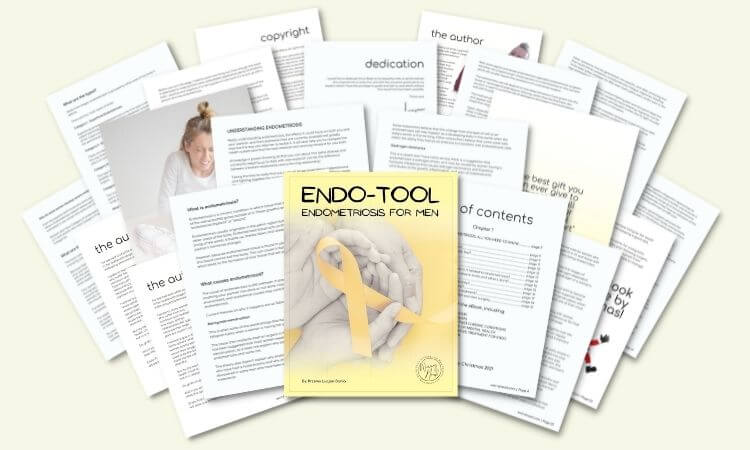
What is endometriosis?
Endometriosis is a condition where endometrial-like tissue, similar to the one which normally lines the inside of the uterus (womb), grows outside of it. Endometriosis most commonly affects the ovaries, fallopian tubes, and the tissue lining the pelvis. In rare cases, endometriosis has been found in other parts of the body, such as the brain, lungs, and even the eye.
What are the symptoms of endometriosis?
The most common symptom of endometriosis is pelvic pain, which can range from mild to severe. Pelvic pain is often associated with menstruation and is thought to be caused by the endometrial-like tissue growing outside of the uterus irritating surrounding tissues.
Other symptoms of endometriosis include:
- Pain during or after sex
- Painful bowel movements or urination
- Excessive bleeding during periods
- Infertility
- Fatigue
- Constipation or diarrhea
- Bloating
These symptoms can vary widely from woman to woman, and some women with endometriosis may not experience any symptoms at all. In addition, the severity of symptoms does not necessarily reflect the severity of the condition.
How is endometriosis diagnosed?
There is no definitive test for endometriosis, and diagnosis can sometimes be tricky. The most common method of diagnosis is laparoscopy, a surgical procedure where a small camera is inserted into the pelvis through a small incision in the belly button. This allows the doctor to directly visualize any endometrial-like tissue growing outside of the uterus.
Other diagnostic tools that may be used include ultrasounds, MRIs, and blood tests. These tests can sometimes be helpful in ruling out other conditions with similar symptoms, but they are not definitive tests for endometriosis.
What is the treatment for endometriosis?
There is no cure for endometriosis, but there are treatments that can help manage the symptoms. Common treatments include:
Pain medication: Over-the-counter pain relievers like ibuprofen or acetaminophen can help to ease pelvic pain. stronger prescription pain medications may also be necessary.
Hormonal birth control: Birth control pills, patches, and vaginal rings can help to reduce the amount of endometrial-like tissue growth.
Gonadotropin-releasing hormone (GnRH) agonists and antagonists: These medications work by stopping the body from producing estrogen, which can help to shrink endometrial-like tissue growth.
Progestin therapy: This treatment involves taking progesterone pills or shots, which can help to reduce the amount of endometrial-like tissue growth.
Aromatase inhibitors: These medications work by reducing the amount of estrogen in the body, which can help to shrink endometrial-like tissue growth.
Surgery: In some cases, surgery may be necessary to remove endometrial-like tissue growths.
Does endometriosis progress with age?
There is no definitive answer to this question, as endometriosis affects each woman differently. Some women find that their symptoms improve with age, while others may find that their symptoms worsen.
There is also a small percentage of women who develop endometriosis for the first time after menopause.
Fibromyalgia.
To fully understand this chronic disorder, you need to learn more about it by answering the following questions:
- What is fibromyalgia?
- What are the symptoms of fibromyalgia?
- How is fibromyalgia diagnosed?
- What is the treatment for fibromyalgia?
- Does fibromyalgia progress with age?
You need to know all the answers because in the same way as with endometriosis, being a man who doesn’t suffer from fibromyalgia himself, you are in a unique position to be one of the most supportive people in your partner’s life.
Since you are interested in fibromyalgia, I wrote a “Fibromyalgia for Caring Partners” e-Book, in which 1st chapter is absolutely FREE!
FREE Fibromyalgia e-Book
Fibromyalgia for Caring Men
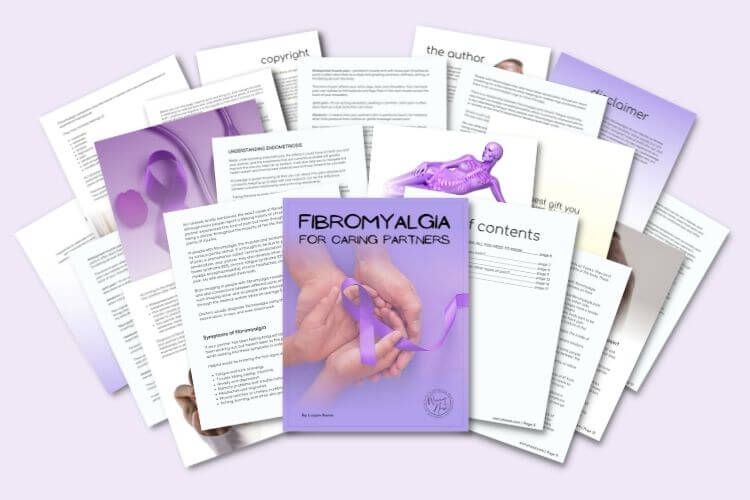
What is fibromyalgia?
Fibromyalgia is a chronic disorder that causes widespread pain and fatigue. It is thought to be caused by a combination of genetic and environmental factors.
Fibromyalgia is most commonly diagnosed in women aged 20-50, but it can affect people of all ages, including men. Other than that, this disorder is still largely misunderstood. Even some doctors don’t believe that it’s a real condition because there’s no specific test to diagnose it.
What are the symptoms of fibromyalgia?
The most common symptom of fibromyalgia is widespread pain. This pain can be constant or may come and go. It is often described as deep, aching pain. Other symptoms of fibromyalgia include:
- Fatigue
- Sleep problems
- Cognitive difficulties (sometimes called “fibro fog”)
- Anxiety
- Depression
- Headaches
- Joint pain
- Muscle pain
- Pelvic pain
How is fibromyalgia diagnosed?
There is no definitive test for fibromyalgia. The diagnosis is usually made based on the symptoms. Your doctor may also order blood tests and imaging studies to rule out other conditions with similar symptoms.
What is the treatment for fibromyalgia?
In the same way as with endometriosis, there is no cure for fibromyalgia, but there are treatments that can help manage the symptoms. Common treatments include:
Pain medication: Over-the-counter pain relievers like ibuprofen or acetaminophen can help to ease the pain. Stronger prescription pain medications may also be necessary.
Exercise: A moderate exercise program can help to improve symptoms.
Cognitive behavioral therapy: This type of therapy can help to change the way you think about and cope with your symptoms.
Sleep medication: If you are having trouble sleeping, your doctor may prescribe a sleep aid.
Does fibromyalgia progress with age?
As well as with endometriosis, there is no definitive answer to this question, as fibromyalgia affects each person differently. Some people find that their symptoms improve with age, while others may find that their symptoms worsen.
Caregiving by men…
When it comes to chronically ill people, they are showered with information about their conditions, whereas their partners find it hard to get information for them. This is especially true for men.
Caregiving by men is a very important role that is not often spoken about especially in endometriosis and fibromyalgia for caregivers who struggle in this role being men. It can be a difficult and isolating experience. Society expects men to be the breadwinners and caregivers, but when they are both, it can be hard to find time for themselves.
Women are naturally caring and seen as those who care for the sick, the kids, and the elderly people. Men, on the other hand, have to be more nurturing, which isn’t the stereotype. When men show care, it is often seen as a weakness.
This makes it hard for men to get the emotional support they need when caregiving.
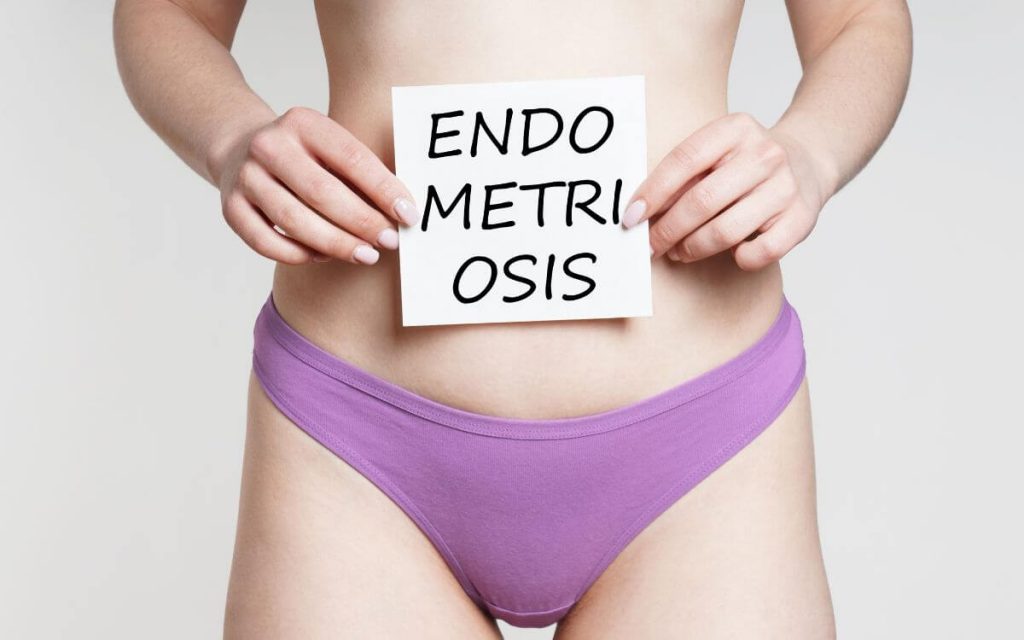
Tips on endometriosis and fibromyalgia for caregivers.
If you are a boyfriend or husband of someone with a chronic illness, there are some things you can do to be supportive.
Learn about the illness because the more you know about it, the better you will be able to understand what your partner is going through and how you can help.
Be patient because chronic illness can be frustrating and overwhelming. There will be good days and bad days. Try to be patient and understanding. Be a good listener. Just being there to listen and offer support can be helpful.
Offer to help your partner with practical tasks. This can include things like cooking, cleaning, or running errands. Cooking usually comes naturally to men, we love doing it, cleaning, and running errands however, this is something men have to work on.
Encourage your partner to get professional help. This can include therapy or counseling. But you also need to take care of yourself. It is important to take care of yourself both physically and emotionally. This will help you be a better caregiver. If you are in a relationship with someone who has a chronic illness, there are many things you can do to help them.
Below I listed 27 tips on endometriosis and fibromyalgia for caregivers:
- Learn about the illness.
- Be patient.
- Offer to help with practical tasks.
- Encourage your partner to get professional help.
- Take care of yourself both physically and emotionally.
- Offer emotional support.
- Be understanding and accepting.
- Help with financial planning and budgeting.
- Help with household chores.
- Take care of the kids (if you have any).
- Exercise with them or help them to exercise if they are unable to do it on their own.
- Attend doctor’s appointments with them.
- Make sure they are taking their medication as prescribed by the doctor.
- Prepare healthy meals for them or help them to prepare meals if they are not able to do it on their own.
- Help them to stick to a treatment plan prescribed by the doctor.
- Offer words of encouragement.
- Pray for them or meditate with them.
- Send them positive text messages or quotes.
- Give them massages.
- Take them out on dates or organize fun activities for them at home.
- Go for walks with them or help them to get outside if they are not able to do it on their own.
- Listen to music with them or watch their favorite TV show with them.
- Scrapbook together or do other crafts together.
- Journal together about their experiences with chronic illness.
- Read books together about chronic illness or other related topics.
- Help them to connect with other people who have chronic illnesses.
- Do anything else that you know would make them happy.
Endometriosis and fibromyalgia for caregivers.
If your partner has endometriosis or fibromyalgia, there are a few things you can do to help them manage their symptoms and feel supported, however, even though there are many similarities, both conditions may require a slightly different approach depending on the condition.
This is why I decided to split this up into how can men help women with endometriosis, and how can men help women with fibromyalgia.
My wife suffers from both conditions, her endometriosis is one of the worst types – stage IV, and it’s deeply infiltrating. This chronic illness has a slightly different way of being taken care of than fibromyalgia disorder. It all differs from person to person, so you’ll need to communicate with your partner and figure out what works best for them.
That being said, let’s take a look first at some tips on caring for your partner with endometriosis…
How can men help women with endometriosis?
Since endometriosis is a physical disease whose existence can be proven when diagnosed, your partner has some kind of evidence for it. This means that she can prove to those who don’t believe her and show them to some extent that she doesn’t imagine her suffering.
Saying that I’ve learned that over time my wife began to feel tired of constant and endless explanations. She just wants to get on with her life, which already has plenty of limitations. The last thing she wants is to educate others.
This is where you can help your partner by advocating for her. Being an endometriosis advocate doesn’t mean that you need to go and protest in front of the government buildings (although you can if you want to).
Simply put, it’s about raising awareness in your everyday life. You can do this by talking about endometriosis with others, sharing articles and posts on social media, or wearing endometriosis awareness merchandise. Doing these things will help your partner feel supported, and let her know that she isn’t alone in this fight.
Another way you can help your partner is by helping her to find the right doctor, and getting a second opinion if necessary. You can, and should, accompany your partner to doctors and hospital appointments.
This way you can be there for her, and make sure that she is getting the care and treatment she needs and deserves.
Of course, one of the best things you can do for your partner is simply to be there for her. Be her shoulder to cry on, lend a listening ear, and give her a hug when she needs it. Sometimes just your presence is enough to make her feel better.
And finally, try to be understanding and patient. endometriosis can be a very unpredictable disease, which means that your plans might change at the last minute. Try to roll with the punches, and don’t get too upset if things don’t go as planned.
How can men help women with fibromyalgia?
Unlike endometriosis, fibromyalgia cannot be physically proven. There is no surgery such as laparoscopy for endometriosis, and you cannot cut fibromyalgia out. Unlike endometriosis, fibromyalgia is a disorder, it does not have lesions.
So how can you prove something, that in other people’s eyes doesn’t exist?
Fibromyalgia is an invisible disorder. You can see your partner suffer, but nobody else can see it. She may look fine to others, but you know that she’s in pain. This can be one of the most difficult things for men because you want to help, but you feel helpless.
Your partner may feel like nobody believes her, or that people think she’s just making things up. This is not the case.
So how can men help women with fibromyalgia?
The same as you would help with endometriosis – the best thing you can do is to be there for her. Be her rock, her support system. Listen to her, and believe her. Show her that you understand and that you are there for her. Spread awareness too.
You can also help by doing things around the house, or taking the rubbish out. Small things like this can make a big difference, and free up your partner’s time and energy to rest and heal.
Unlike endometriosis, where strong painkillers and anti-inflammatory medication often helps, fibromyalgia responds well to CBD, a cannabinoid found in cannabis, and it has powerful analgesic and anti-inflammatory properties.
The difference between painkillers and CBD is that painkillers only mask the pain, while CBD actually helps to heal the body. This is why more and more women are turning to CBD for relief from their fibromyalgia symptoms.
CBD can help to relieve pain and improve sleep quality. It can also help with other symptoms associated with fibromyalgia, such as anxiety and depression.
If you want to try CBD to help your partner, make sure to get a high-quality product from a reputable company. Start with a low dose, and increase gradually as needed.
But what about two conditions?
Talking about endometriosis and fibromyalgia for caregivers, we need to learn how can men help women with both conditions.
To answer that, you need to understand why endometriosis and fibromyalgia sometimes occur together. You can find the answer below…
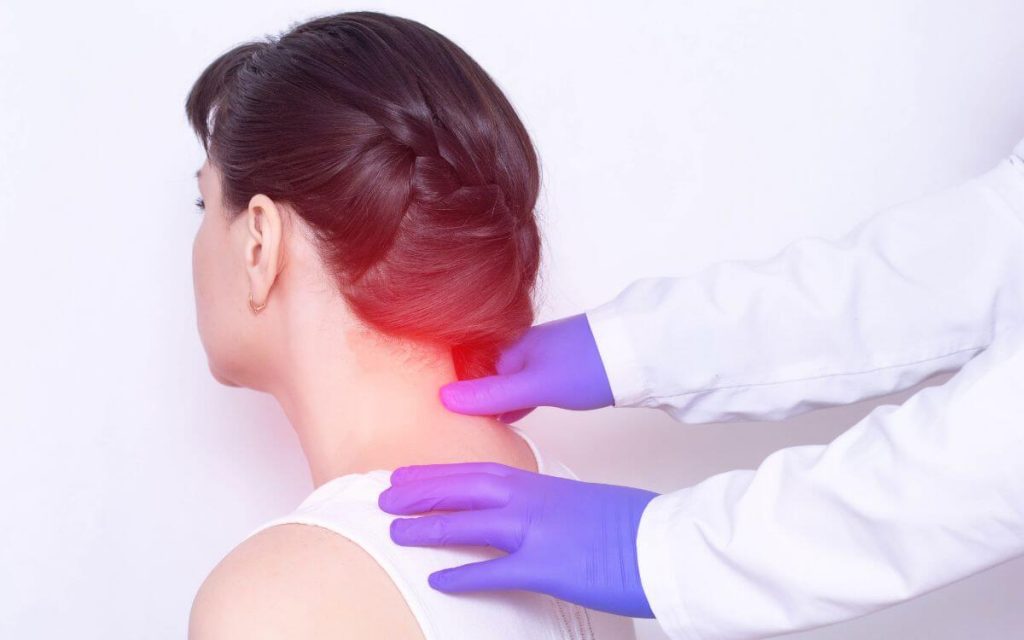
The link between endometriosis and fibromyalgia.
Endometriosis is a chronic inflammatory disease, and inflammation is one of the key drivers of fibromyalgia.
In endometriosis, tissue similar to the lining of the uterus (the endometrium) grows outside of the uterus. This misplaced endometrial tissue bleeds each month, just like the endometrium inside the uterus, and this can cause inflammation.
This inflammation can spread from the pelvis to other parts of the body, and it is thought that this is one of the reasons why endometriosis and fibromyalgia sometimes occur together.
Another link between endometriosis and fibromyalgia is that both conditions tend to run in families. So if your partner has endometriosis, there is a good chance that you or someone in your family also suffers from fibromyalgia.
So what can men do to help women with both endometriosis and fibromyalgia?
The same as before – be there for her, listen to her, and believe her. Show her that you understand and that you are there for her. Do things around the house to help lighten the load, and try CBD if other medications haven’t helped.
Above all, be patient and understanding. Endometriosis and fibromyalgia can be unpredictable diseases, which means that your plans might change at the last minute. Try to roll with the punches, and don’t get too upset if things don’t go as planned.
The impact of endometriosis and fibromyalgia on mental health.
The impact of chronic illness on mental health is well-documented. Having a chronic illness can be very isolating, and can lead to feelings of sadness, anxiety, and depression.
This is especially true for women with endometriosis and fibromyalgia. These conditions can be very painful and debilitating and can make it hard to do the things your partner enjoys. This can lead to feelings of loneliness, frustration, and helplessness.
When it comes to endometriosis and fibromyalgia for caregivers, as a man, you can help by being there for your partner, but to do that effectively, you need to learn about general anxiety, panic attacks, Obsessive-Compulsive Disorder, and depression, all of which are the consequences of endometriosis and fibromyalgia.
Your partner is most likely to suffer from some of these conditions, so it’s important that you know how to recognize the symptoms and be there for her.
Anxiety, depression, and chronic pain can be a vicious cycle. The anxiety and depression caused by endometriosis and fibromyalgia can make the pain worse, and the pain can make the anxiety and depression worse. It’s important to break this cycle by getting help from a mental health professional.
If you have no access, or money to get cognitive behavioral therapy, you can still help your partner by learning about CBT and providing support. This can be a difficult and daunting task but is important.
I hope you found some useful tips about endometriosis and fibromyalgia for caregivers like yourself. Remember to leave a comment below.


About Me
Hi, I’m Lucjan! The reason why I decided to create this blog was my beautiful wife, who experienced a lot of pain in life, but also the lack of information about endometriosis and fibromyalgia for men…
